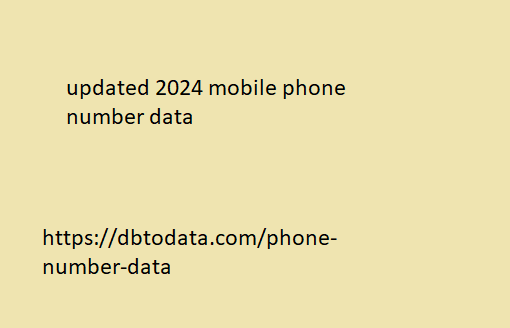Have you ever found yourself redirected Here’s Why You Keep Getting to random websites while using Google Chrome? It’s frustrating and confusing. Let’s break down why this happens and what you can do about it.
Chrome Redirects
Chrome redirects happen when you’re using Google Chrome to surf the internet, but instead of going where you want, you end up on a different website you didn’t choose.
These can happen because of sneaky programs on your computer, shady websites, or even tricks from online scammers.
They can be annoying and sometimes dangerous, so keeping your computer safe and cautious while browsing is essential.
What Causes Chrome Redirects?
Chrome redirects can occur due to various reasons.
Chrome Redirects
Image: Infographic of the causes of Google Chrome browser redirects.
• Adware and Malware: Adware and malware infections on your computer can hijack your browser settings and force it to reroute to specific websites, often filled with advertisements or potentially harmful content that could mess up your computer even more.
• Malicious Browser Extensions: Your computer might be infected with a program that monitors your incoming and outgoing requests, interfering with your web searches and the URLs you enter into your browser’s address bar.
Some Chrome extensions or tools may contain malicious code that alters your surfing experience by diverting you to other websites without you knowing.
• Compromised Websites: Visiting recent mobile phone number list compromised or hacked websites can trigger this. Cybercriminals inject malicious code into legitimate websites, leading visitors to scam sites or pages hosting malware.
• Phishing Attempts: Reroutes or page diversions may be part of phishing attempts to trick users into disclosing sensitive information. Attackers create fake websites or login pages to deceive users into entering their credentials.
• Clickjacking Techniques: Clickjacking involves tricking users into clicking on hidden or disguised elements on a webpage. These elements may overlay legitimate content, leading users to unintended destinations.
The Negative Effects of Chrome Redirects on Your System
• Browser Hijacker: Browser hijacking occurs when malicious software takes control of your browser settings, such as your homepage and default search engine, and diverts your web traffic to undesirable destinations.
• Outdated Software and Security Vulnerabilities: Using outdated software, including your operating system, can leave your system vulnerable to exploitation by cybercriminals. Hackers exploit security vulnerabilities to perform unauthorized actions, such as redirects.
• Popup Ads and Pop-unders: Some websites display intrusive popup ads or pop-unders that divert users to other sites when clicked.
Chrome redirects can negatively impact a user’s system in several ways:
Image: Infographic of the effects of Chrome browser redirects.
Security Risks
Reroutes may lead users to malicious websites that can infect their system with viruses, malware, or other harmful software. These infections can compromise the security and integrity of the user’s computer, leading to data loss or financial harm.
Privacy Breach
Reroutes may expose users to privacy breaches by redirecting them to fraudulent sites designed to steal personal information such as login credentials, credit card details, or other sensitive data. Once obtained, this information can be used for identity theft or sold on the dark web.
Performance Issues
Constant reroutes can slow down the user’s browser and overall system performance, making it difficult to surf the web or perform tasks efficiently. Users may experience lag, freezing, or crashing of their browser due to the excessive reroutes.
User Experience (UX)
Search engine redirects disrupt the user’s surfing experience by diverting them from their intended destination. This can be frustrating and time-consuming, especially when users try accessing specific websites or completing online tasks.
Loss of Trust
Experiencing frequent page diversions can erode users’ trust in their browsers and the websites they visit. Users may become wary of clicking on links or interacting with content online, leading to decreased confidence in the security of their online activities.
What You Can Do About Chrome Redirects
Ignoring these issues can allow them to escalate and potentially cause further damage to your system. Addressing them promptly is essential for protecting users from security threats, safeguarding their privacy, and enhancing the overall user experience.
Here are the top 5 things you should do to address these concerns:
About Chrome Redirects
Image: Infographic of the steps involved in tackling Chrome redirects.
Installing and Updating Antivirus and Anti-Malware Software
Installing and updating antivirus and anti-malware software involves downloading and setting up computer programs designed to detect and remove harmful software, such as viruses, malware, and spyware. These programs scan your files, emails, and web traffic for signs of dangerous code or behavior.
Tip: Don’t forget to keep these programs updated so they can remove unwanted threats and keep your computer protected.
Reviewing and Removing Suspicious Extensions
When you use Google to surf the internet, you can add extra features called extensions to make your web browsing experience better. These extensions can block unwanted ads, help you take notes, or even change how websites look.
However, some of these add-ons might not unlimited number of partners unlimited number of shareholders be trustworthy. They could secretly do things you don’t want, like redirecting you to random websites or collecting your personal information without your permission. These are called suspicious browser extensions.
To keep your browsing safe and smooth, I recommend reviewing and removing any suspicious extensions from your browser. Here’s how you can do it:
1. Open the browser: Start by opening Google’s browser on your computer.
2. Go to Extensions: Click on the three dots at the top right corner of the browser (the menu icon). From the dropdown menu, select ‘Extensions’.
Open the browser
3. Review Your Extensions: You’ll see a list of all the extensions you’ve added to Google’s browser. Take a close look at each one. If you see any that you don’t recognize or that seem sketchy, they might be suspicious.
Review Your Extensions
4. Remove Suspicious Extensions: To remove a suspicious extension, click the ‘Remove’ button. The browser will ask you to confirm that you want to remove the extension. Click ‘Remove’ again to confirm.
remove Suspicious Extensions
5. Restart the browser: After removing the suspicious extensions, it’s a good idea to restart the browser to make sure the changes take effect.
Practice Safe Browsing Habits
Practicing safe browsing habits means being careful and smart while you’re online. Here’s what it involves:
Practice Safe Browsing Habits
Image: Safe browsing habits best practices.
1. Think Before You Click: Before clicking on any link or downloading any software, ensure it’s from a trustworthy source. Be cautious of links in emails or websites you’re unfamiliar with.
2. Use Strong Passwords: Choose strong, unique passwords for your accounts, and avoid using the same password for multiple accounts. This helps protect your personal information from hackers.
3. Update Your Software: Keep your web browser, antivirus software, and operating system up to date. Updates often include important security fixes that help keep your computer safe from online threats.
4. Stay Away from Suspicious Sites: If a website looks sketchy or offers something that seems too good to be true, it’s best to steer clear. Avoid clicking on suspicious links, as these sites can often contain malware or try to scam you.
5. Be Cautious with Downloads: Only download files from reputable sources. Be wary of anything that asks for your personal information or tries to download software without your permission.
Using ad and Pop-up Blockers
Using ad and pop-up blockers is like having special guards for your web browser.
Ad blockers keep annoying advertisements from showing up on websites you visit. These ads can sometimes lead to unwanted reroutes or take you to shady websites. Pop-up blockers stop windows that suddenly appear on your screen when you visit certain websites. Some pop-ups can also lead to reroutes and harmful content.
Seeking Professional Assistance
If you’ve tried everything you can think of but you are unable to fix the problem, and those pesky reroutes keep happening, it might be time to call in the experts.
Professionals can analyze your system, search for hidden problems, and fix issues that might be too complicated to handle alone. While it might cost a bit of money, ensuring your computer and personal information stay safe and secure while surfing the web is often worth it.
Final Thoughts
In conclusion, dealing with unexpected awb directory redirects in Google Chrome can disrupt your browsing and put your computer at risk. To fix this issue, you must understand why it happens and take steps to protect yourself.
You can act now to shield your computer, phone, or tablet. Remember to avoid clicking on doubtful links or downloading files from unfamiliar sources. This simple approach goes a long way in avoiding scammers and malicious individuals while you surf the web.




